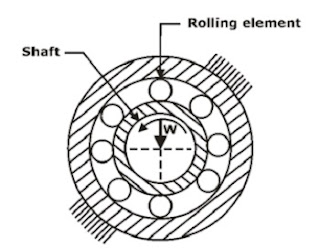In this article, Your are going to study definition, layout, working, advantages and disadvantages of hydropower plant.
Definition of hydropower plant
HydroPower Plant is the electricity-producing plant in which the water is an essential fuel. The potential energy is being converted into kinetic energy and kinetic energy is further converted into the mechanical energy. This mechanical energy convert into electrical energy with the help of the turbine and motor. Thus, hydropower plant is also called hydro electric power plant.
Layout of hydropower plant
The layout of hydropower plant consist of following.
- Headpond or Reservoir
- Control gate
- Penstock
- Turbine
- Draft Tube
- Tail Race
- Transmission Line
- Electric Generator
- Transformer
- Power House
1. Headpond
There is one reservoir or headpond which is having a large area in which a huge amount of water is being stored here. In headpond, the energy is in the form of potential energy.
2. Control Gate
There is one control gate which is regulate the flow of the water. When the control gate is fully open the speed of water flow is maximum and partly open the speed of water is limited.
3. Penstock
There is pipe in which the water is flow is called penstock. The water stored at the dam of headpond is being released by the control gate. The water then stars moving towards turbine. The headpond is at high height and turbine situated at lower height. Thus, we can increase the speed of water because of gravitational force.
4. Turbine
Turbine is the main device used for electricity generation. The work of turbine is convert the kinetic energy of fluid into the rotational energy. The high kinetic energy water travels through the penstock to the nozzle, where it impacts the turbine blades. Turbine blades start rotating, thus the rotational energy can also be called mechanical energy.
5. Draft Tube
Draft tube is the component which is used to enlarging the pipe area for sending maximum fluid to the other side.
6. Tail Race
The tail race carries the water away from the plant this, the water is sent to the river.
7. Transmission Line
The transmission line carries power from the power unit or transformer and transfers from one source to another. This line is made up of conductor.
8. Electric Generator
When the turbine starts rotating, the turbine shafts also rotating. The motors are attached to the turbine shafts which is also rotating and electric generator attached to them which generates electricity.
9. Transformer
The transformer is connected to the generator. The electricity generated is now controlled by the transformer. The work of transformer is to setup or set down the voltage.
10. Power House
The power house means there is a house in which the power is being stored and released to the transformer and so on.
HydroPower Plant working
The large amount of water is stored into the dam in the form of potential energy. The control gate releases the water, and water begins to flow into the penstock. There are two components related to the penstock surge tank: a valve and nozzle. The valve is initially closed, but when the water level reaches the maximum level that can produce high pressure, we turn on the valves. The water with high pressure start flowing and strikes to the turbine blades through the nozzle. The turbine blade start rotating. We observed the water which is having potential energy till now is converting into kinetic energy. An electric motor is mounted on the turbine shafts. Thus, rotation of turbine blades also rotates the turbine shafts, which also rotates the electric motor. Hence, kinetic energy convert into the mechanical energy and then further it is converted into electric energy. The energy which is generated is sent to the powerhouse, transformed, and transmission line. The water that rotates the turbine blades is now sent to the river via a tailrace. The hydroelectric facility is designed to hold a considerable volume of water. When the water reaches its maximum level, it is released, causing a flood in some areas.
Hydropower plant advantages
1. Renewable energy source
Hydropower plant is renewable because it relies on water cycle, which is continuously replenished by precipitation.
2. Low operating cost
The cost of operating and maintenance is very low, only the
cost of built it is one time cost. After that their operation and maintenance cost is minimal. But, the first time construction cost is also very high.
3. Clean energy
Hydropower plant produces no air pollution or direct green house gas emissions. Thus, it is clean energy plant.
4. High efficiency
Hydropower plant convert more than 90% of the available energy into electricity, making them one of the most efficient energy sources,
5. Flexible power generation
Hydropower plant can quickly adjust to fluctuations in electricity demand as per that it can be easily regulated up or down.
6. Flood control and water management
Dams can help to manage water resources, irrigation, and flood control.
7. Long lifespan
Hydropower plant can operate for many decades for around 50 to 100 years or more. Thus, this plant provide long term energy solutions.
8. Recreational opportunities
The reservoirs can created by dams. Thus, it can offer recreational activities such as boating, fishing, and swimming.
Hydropower plant disadvantages
1. Environmental impact
The dams can significantly alter ecosystems, affecting fish migration, water quality, and local wildlife.
2. Dependence on water availability
This plan electricity generation is totally dependent on water availability, it can be affected by seasonal variations of water.
3. Risk of Catastrophic failures
Though dam failure is rare, but if that happened it can lead to catastrophic flooding and significant loss of life and property.
4. Siltation and sedimentation
Reservoirs can accumulate silt and sediment, which can reduce the efficiency and lifespan of this plant over time.
Explore related information





